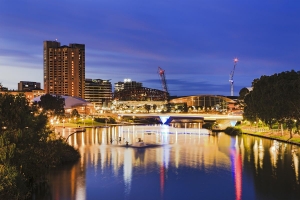Published by The Advertiser, Monday 23 September
Much hot air has been written about what went wrong with electricity prices in South Australia in July. Prices hitting $14,000 during a five minute period prompted players in the electricity market to try to pin the blame on mercenary gas power plants or unreliable wind farms — anyone but themselves. Politicians also reacted predictably, promising more generation, more links to other states, more renewables.
But all players and commentators are responding to the wrong problem. And they all need to calm down. Yes, prices went briefly through the roof. But this has happened before and is likely to happen again, as the Grattan Institute’s new report, Keeping the lights on: lessons from South Australia’s power shock, shows.
The most important thing about July was that the lights stayed on. Knee jerk reactions to the event could do more harm than good. The impact of these events on South Australian households’ electricity bills is likely to be minor, and may not even be noticeable.
Electricity retailers protect consumers from incredibly high price spikes. The spikes most damaged a small number of large businesses that did not — or could not — protect themselves.
The big story, which occurred before July even started, has been lost amid the nonsense about $14,000 electricity prices. The price we are paying for electricity is going up.
Towards the end of June retailers announced that South Australians’ electricity bills would rise by over 10 per cent from the beginning of July. The price rises have very little to do with whether the wind was blowing or whether nasty generator owners were ripping everyone off.
It has to do with the fact that Australia needs to tackle climate change and to do so we need to transform our electricity sector. South Australia is at the forefront of this change.
Old coal-fired power stations that produce high-polluting electricity, such as the ones that operated in Port Augusta, have closed. Their replacements are either more expensive gas power stations or a load of brand new stuff – be it renewables, batteries or poles and wires that link to generators in other states.
If we continue to pollute, we’ll have to pay for it. To avoid polluting we will have to buy new stuff, which costs money. Either electricity bills or taxes will go up. One way or another, the change to our power system to ensure that Australia reduces greenhouse gas emissions has to be paid for.
The State Government needs to be careful in claiming that new measures — potentially building new generation or new poles and wires that connect the state’s grid to New South Wales — will “drive down costs for businesses and consumers and reduce carbon emissions”.
Magic pudding solutions to climate change have been promised before and failed before. Moving to an electricity sector that doesn’t produce greenhouse gases is going to cost. We need to work hard to make sure it costs as little as possible. That means working with other states and the Federal Government to come up with the best policies – a fact that the South Australian Government has smartly recognised.
Doing its own thing to tackle climate change and the electricity sector, would risk lumbering South Australians with additional costs with little impact. An interconnector will be a waste of money if New South Wales undergoes its own electricity transition and no longer has cheap electricity to sell to South Australia.
In July the electricity market acted as it was designed to. If these events force politicians to get sensible and seek a national solution, then they will have had some benefit. An even better result will be more honesty from our leaders about the costs of transforming our electricity sector, and the urgent need for it to happen.
 Published by
Published by